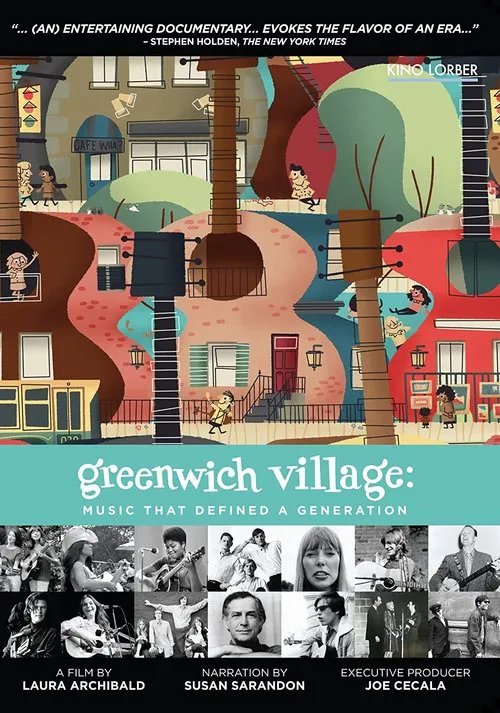Greenwich Village: Music That Defined a Generation

Plot
In the vibrant streets of Greenwich Village, New York, the 1960s and early 1970s witnessed a revolutionary music scene that defined a generation. It was an era of artistic expression, where the air was electric with the sounds of folk, rock, and jazz. Music that was raw, unbridled, and deeply personal, reflecting the hopes, fears, and desires of a generation coming of age. This was the epicenter of the counterculture movement, where the Village's narrow streets became a melting pot of creative energies. The film "Greenwich Village: Music That Defined a Generation" takes us on a musical journey through the lives of some of the finest singer-songwriters of the time. We see the world through the eyes of iconic figures like Bob Dylan, Joni Mitchell, Judy Collins, and James Taylor. Each of their stories is a testament to the Village's enduring spirit, a place where creativity knew no bounds. As we delve into the world of Greenwich Village, we witness the emergence of folk music as a powerful force for social change. Bob Dylan, a young poet from Minnesota, became a catalyst for the counterculture movement with his incendiary songs that spoke to the disillusionment of youth. His songs like "Blowin' in the Wind" and "The Times They Are a-Changin'" became anthems for a generation, questioning authority and pushing the boundaries of social conscience. In the midst of this fertile musical landscape, Joni Mitchell rose to prominence, bringing a unique voice and perspective to the scene. Her introspective songwriting and soaring vocals captivated audiences, and her songs like "Both Sides Now" and "A Case of You" are timeless classics that continue to inspire and move listeners. Judy Collins, another influential singer-songwriter, played a pivotal role in shaping the Village's music scene. Her haunting beauty and distinctive style captivated audiences, and her interpretations of songs like Dylan's "Fire and Rain" and Leonard Cohen's "Suzanne" remain iconic to this day. James Taylor, a young guitarist-singer-songwriter from North Carolina, brought a gentle yet profound voice to the Village scene. His soulful melodies and poignant songwriting captivated audiences, and his songs like "Sweet Baby James" and "Country Road" are staples of the era's music. As we explore the Village's music scene, we also encounter the larger-than-life figure of David Crosby, a key member of The Byrds and Crosby, Stills & Nash. Crosby's songs like "Guinnevere" and "Long Time Gone" showcase his storytelling ability and poignant insights into life and social issues. The Village's music scene was not just about individual artists; it was about a community of like-minded individuals coming together to create something bigger than themselves. This film captures the essence of that spirit, revealing the camaraderie, cooperation, and mutual respect that defined the era. We witness the historic gatherings at Gerde's Folk City and Café Wha?, where musicians and audiences alike came together to celebrate music and art. These iconic venues were more than just places for performances – they were incubators for creativity, fostering new ideas and artistic collaborations that helped shape the era's music. Through intimate interviews and rare archival footage, "Greenwich Village: Music That Defined a Generation" offers a captivating glimpse into the world of these iconic singer-songwriters. We see the Village as it was – a vibrant, often chaotic, yet always vibrant community of artists, musicians, and idealists. The film also explores the era's social context, shedding light on the tumultuous times that shaped the music. The Vietnam War, civil rights movements, and other social upheavals of the era are woven throughout the narrative, providing a rich tapestry of context and history. Throughout, we are reminded of the profound impact that music had on the world of that era. These singer-songwriters, though often associated with the Village scene, transcended geography and genre to speak to a global audience. Their music reflected the collective hopes, fears, and aspirations of a generation, providing a soundtrack for the era's pivotal moments. "Greenwich Village: Music That Defined a Generation" is more than a nostalgic tribute to an era; it is a testament to the enduring power of music to inspire, to heal, and to bring people together. As the film concludes, we are reminded of the Village's continued spirit, a place where creativity still knows no bounds, and music remains an essential element of human expression. The legacy of the Village's music scene endures, a reminder of the transformative potential of art and music to shape our world and leave a lasting impact on generations to come.
Reviews
Recommendations


